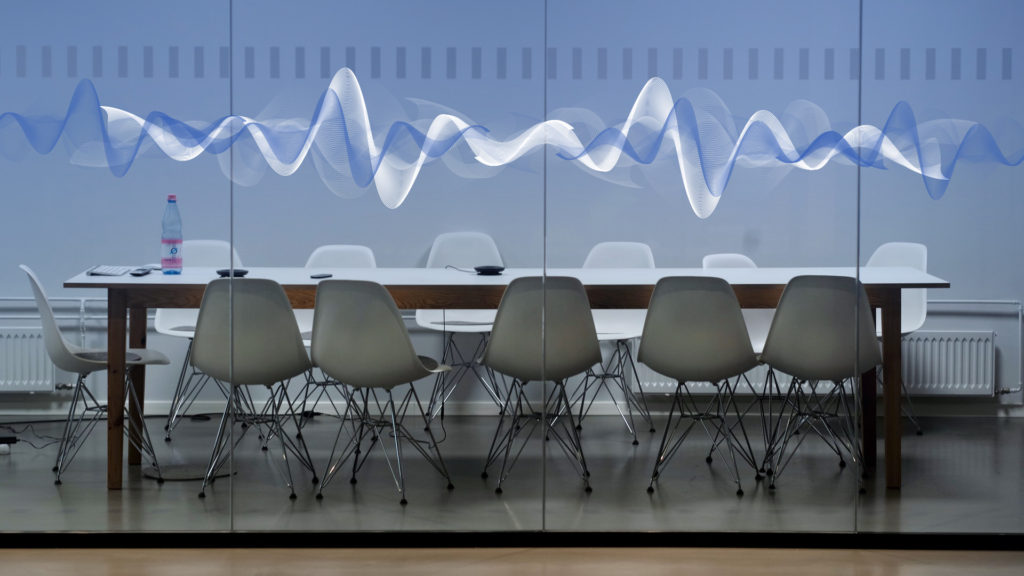As I’ve noted previously, the lab-proven ability of an operable wall to block noise is the second most common selection criteria (price is #1). But the fact is there’s no such thing as a soundproof operable wall.
If partition assemblies are imperfect—and laboratory performance indicators such as STC and NRC aren’t completely reliable indicators of what to expect in the real world of acoustics—what’s a consumer to do?
I recently read an article in The Construction Specifier, coauthored by Viken Koukounian & Niklas Moeller LogiSon Acoustic Network, that acknowledges this issue and offers solutions. They are our guest contributors for this post.
Acoustics Is A Team Sport
Clients want—and need—closed rooms to provide speech privacy and noise control. But as Moderco identifies above, walls alone don’t often ensure these results, even when performing perfectly to spec.
Why not? Because hearing noise or conversation from an adjacent room isn’t only based on the wall’s ability to block noise, but on two factors in the listener’s location: the level of unwanted noise/speech and the background sound level. When the first is higher than the second, noises are audible and conversations intelligible.
All speech intelligibility measures, including ASTM E1130 and E2638, consider background sound levels when calculating speech privacy. The predictive Speech Privacy Potential (SPP) tool states that the sum of the room isolation and background sound level (dBA) must be 75 or more to achieve confidential speech privacy. Privacy is agreed to be mutually dependent on isolation and background sound levels.
But how can intruding noise exceed the background in a well-built space?
First, some noise invariably gets through. A room’s isolation performance depends not just on walls, but on its entire construction. The composite STC (STCc) derives from the blocking performance of walls, ceilings, windows, doors, HVAC, joints/seals, and any penetrations. Sound not only passes through the wall, but flanks it via these other elements. The lowest-performing element determines how much noise passes from one room to the next.
Second, ambient sound levels are typically low and unreliable. Designing for background sound levels is often ignored, because they’re commonly considered an uncontrollable outcome of other design choices. Background noise sources (e.g. building systems) are, in fact, also highly inconsistent—from room to room or moment to moment—leading many to conclude that only the lowest levels may be relied upon. STC guidelines are based on this unspoken assumption.
However, appropriate background sound levels can be precisely controlled by using an electronic sound masking system: a network of in-ceiling electronics and loudspeakers that introduce an airflow-like sound that inhibits your ability to hear intruding noise or conversation.
To achieve the desired acoustic control, the masking sound must precisely and consistently meet the specified spectrum and levels throughout the facility. Doing so depends on two factors: small, localized control zones and automated adjustment (i.e. tuning) of each of them. Although parts of a facility may appear ‘similar,’ numerous acoustical differences exist, particularly in closed rooms. Therefore, each should have its own dedicated zone that’s tuned to meet specs. The LogiSon system delivers best-practice—small zones auto-tuned using our proprietary TARGET software—yielding results not possible with less flexibly-designed or manually-tuned systems.
The following illustrates how masking works in partnership with a wall system (and overall room construction) to provide privacy. We were called into an existing space where conversations could be clearly heard through the walls, even at normal voice level. Testing showed the room’s existing background level was just 38.5 decibels (A-weighted); consequently, you could understand 56 percent of conversation. With the LogiSon system set to a low 42 decibels, comprehension dropped to 14 percent. When increased to 44 decibels, comprehension further declined to just 5 percent, meeting the standard for confidential speech privacy. Subjectively, you could barely hear anyone speaking.
Increasing privacy with a higher masking volume points to another unique benefit: unlike physical construction, masking can be adjusted post-construction. Find that you need more privacy? Simply raise the masking level.
Of course, it’s best to incorporate masking during design rather than after the fact. Planning with a known level of masking sound allows you to more accurately specify the remaining elements of the room construction and ensure the acoustical performance you need.
Appreciate also that sound masking is typically used to address the relatively lower-level noises that you would hear due to insufficient background sound level. One shouldn’t rely on it to address very loud activities, such as weddings in large ballrooms.
In summary, while the performance of each individual design element is important, it isn’t the client’s end goal. They don’t hope for a wall with a specific STC, ceilings with a certain absorption or blocking performance, or a masking system that’s always within fractions of a decibel of the ideal. They ultimately want a space that’s quiet, private, comfortable, and promotes productivity. Sound masking and operable walls are great partners with respect to these goals. Designs that use a balanced combination of acoustical control methods achieve greater performance in the most flexible and cost-effective way, without over-specifying any single component.
Authors
Niklas Moeller is the vice-president of K.R. Moeller Associates Ltd., manufacturer of the LogiSon Acoustic Network (www.logison.com).
Viken Koukounian, PhD, P.Eng., is an acoustical engineer at K.R. Moeller Associates Ltd.
Moderco thanks Nik and Viken for this article and their expertise. If your project involves Operable Walls and sound masking or you are considering the use of either or both systems please contact Moderco at info@moderco.com or 1 800 363-3150 to discuss.





